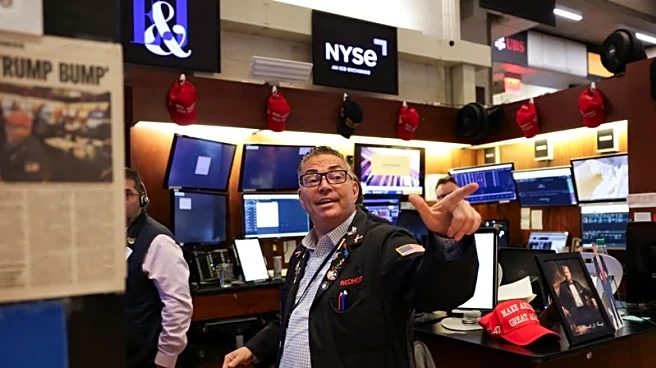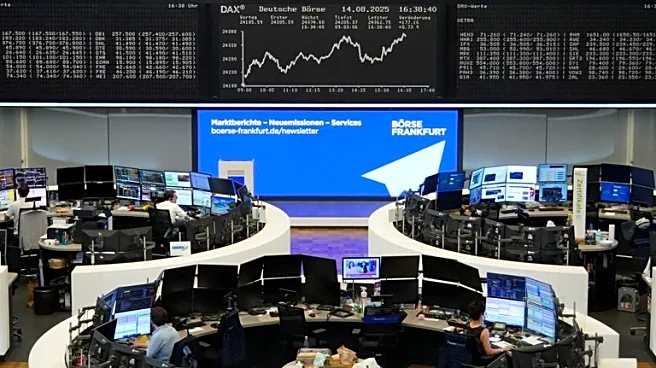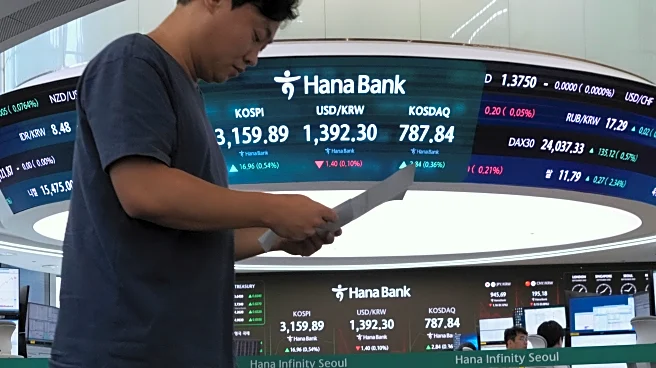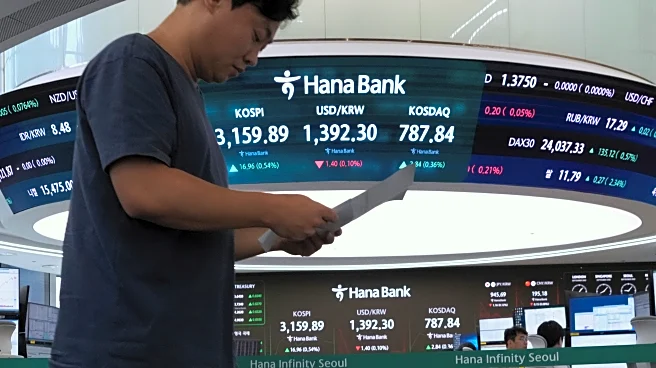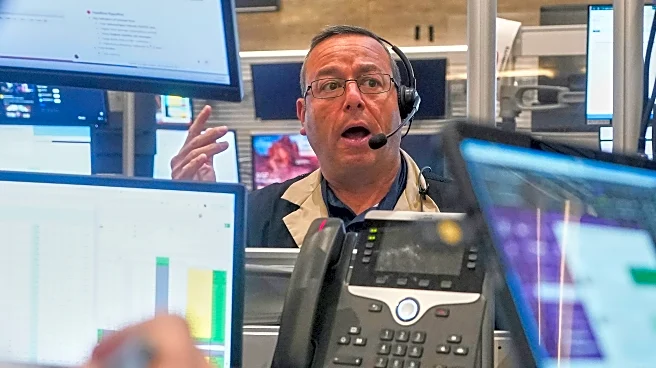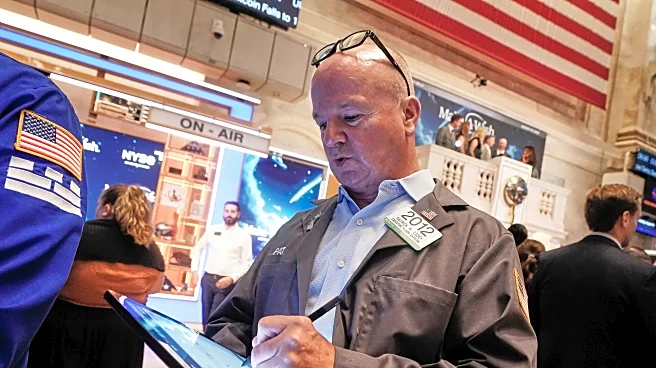What's Happening?
The global market landscape in 2025 is being shaped by three key factors: the U.S. Federal Reserve's anticipated rate cuts, the resilience of technology stocks, and gains in Asian markets amidst geopolitical tensions. The Federal Reserve is expected to implement a 25-basis-point rate cut in September 2025, a move that has captured the attention of global investors. While some analysts, like those from BlackRock, predict multiple cuts throughout the year, others, such as Morgan Stanley, are more cautious, citing strong GDP growth and stable financial conditions as potential deterrents. The technology sector, particularly in the U.S., has benefited from these rate expectations, with significant gains in the NASDAQ Composite driven by AI and cloud computing investments. Meanwhile, Asian markets, led by China's tech-driven growth, have shown resilience despite ongoing U.S.-China trade tensions.
Why It's Important?
The Federal Reserve's rate decisions are crucial as they influence global capital flows and investor strategies. Lower rates typically boost growth-oriented sectors like technology by reducing the discount rate for future earnings. However, this also introduces risks, as seen with the concentration in tech stocks, which could lead to market volatility if expectations are not met. The resilience of Asian markets, particularly China's tech sector, highlights the shifting focus of global investors towards regions with strong growth potential. This shift could lead to a reallocation of investments away from traditional U.S.-centric portfolios, impacting the U.S. economy and its global influence. Additionally, geopolitical tensions, especially between the U.S. and China, remain a significant risk factor that could disrupt global supply chains and trade flows.
What's Next?
The upcoming Federal Open Market Committee (FOMC) meeting on September 16-17, 2025, will be pivotal as it will provide insights into the Federal Reserve's economic projections and policy direction. Investors will closely watch for signals regarding the federal funds rate path, which could either reinforce or dampen market optimism for further rate cuts. In the technology sector, the focus will be on the monetization timeline of AI advancements, as prolonged delays could affect stock valuations. For Asian markets, continued monitoring of geopolitical developments and structural reforms in countries like India will be essential for investors seeking diversification. The anticipated weakening of the U.S. dollar may also shift capital towards European equities and Swiss franc-denominated assets, as investors seek safe havens amidst global uncertainties.
Beyond the Headlines
The interplay of these factors underscores the complexity of global market dynamics in 2025. The Federal Reserve's policy decisions not only affect domestic economic conditions but also have far-reaching implications for international markets. The concentration risk in the tech sector highlights the need for diversified investment strategies to mitigate potential downturns. Furthermore, the geopolitical landscape, particularly the strategic competition between the U.S. and China over advanced technologies, could have long-term implications for global trade and economic stability. Investors must navigate these challenges with a balanced approach, considering both short-term opportunities and long-term risks.


